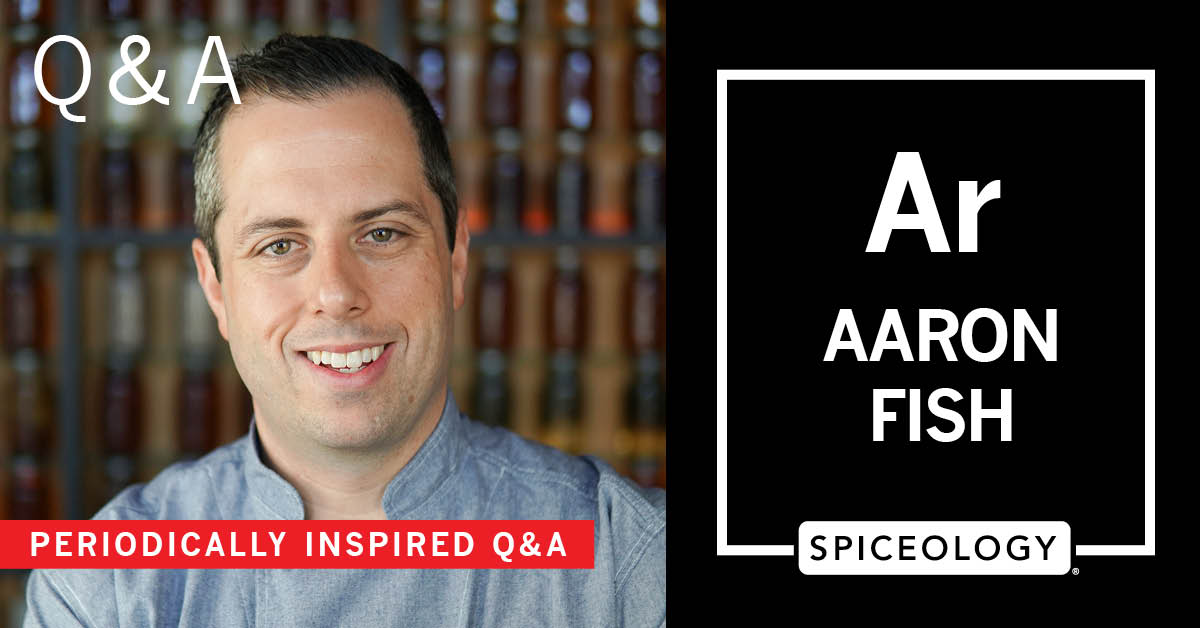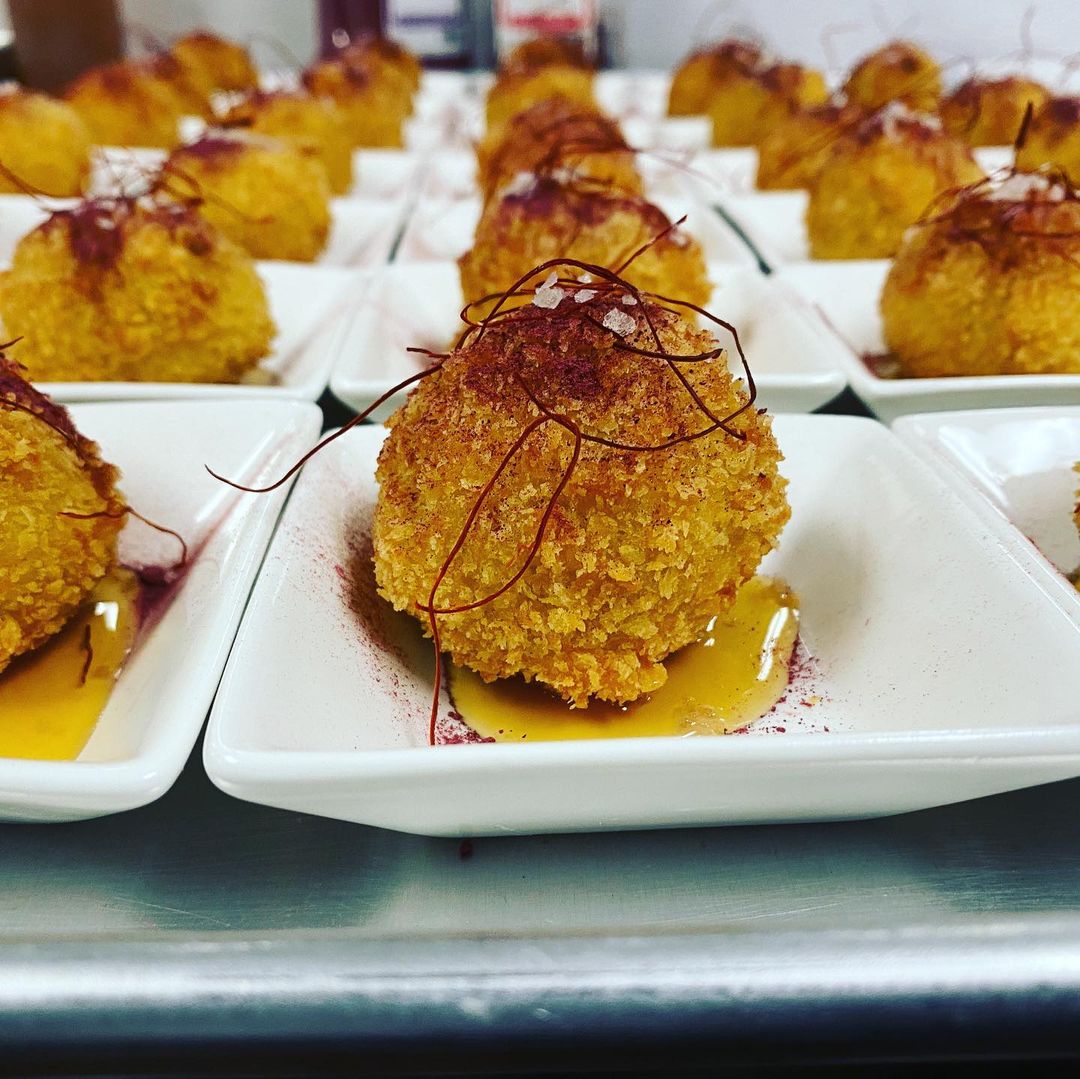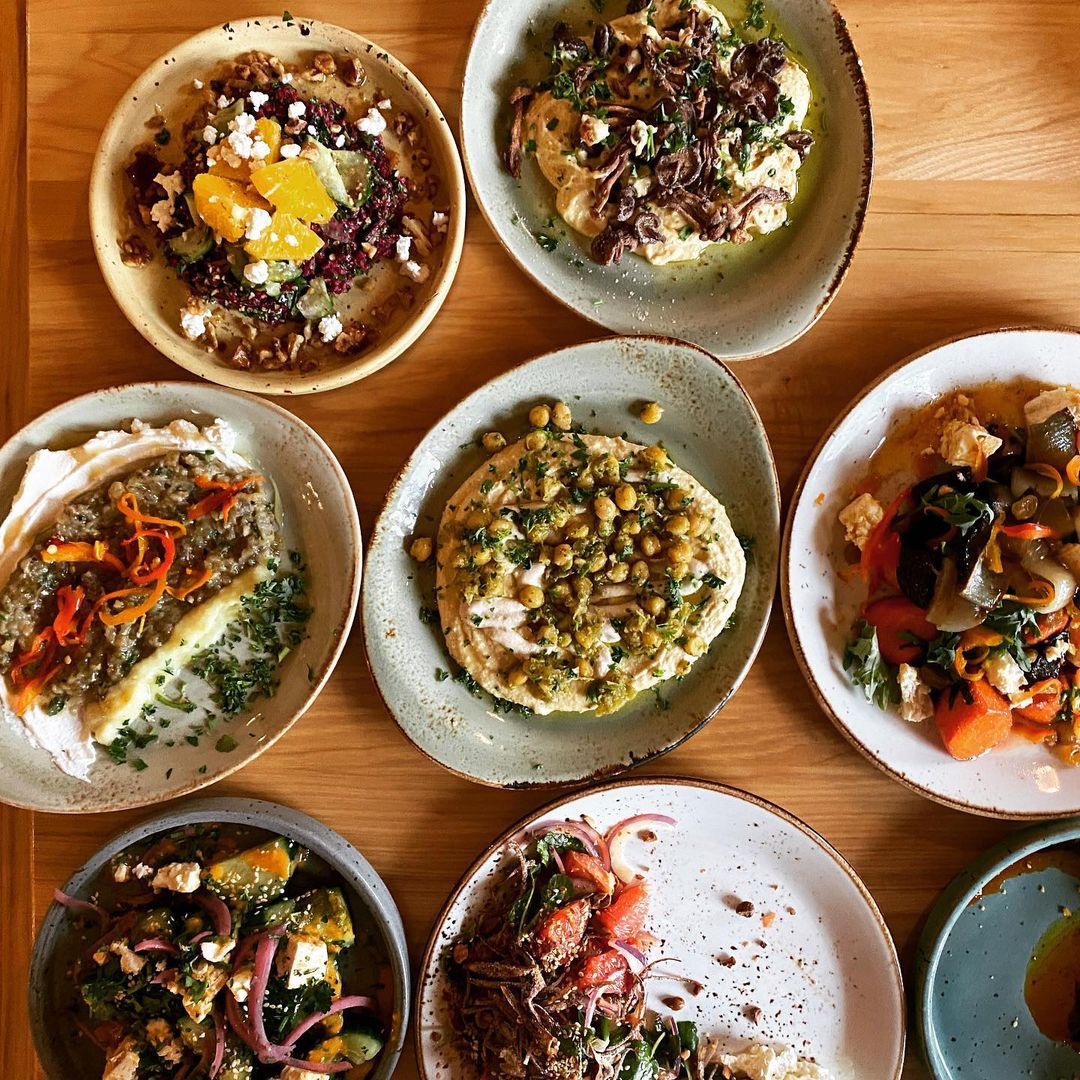
Chef Aaron Fish appreciates a good pun, and we can prove it. He partners with Spiceology on a video series called Fish Food where he teaches chefs and homecooks how to make tasty, approachable snacks. And as a fellow Spokanite, Aaron’s been a part of the extended Spiceology family for years.
With decades of experience in the culinary world, Aaron has worked his way up from Bay Area beginnings to leading the charge in Eastern Washington. As Chef de Cuisine for the Eat Good Group with six restaurants, a catering arm, plus annual events, he’s putting Spokane on the map as an epicurean hotspot of the PNW.
We sat down with Aaron for Spiceology’s Periodically Inspired interview series that dives deep into a chef’s delicious creativity. Read the full interview and get to know him below:
When did you first find a love of cooking?
“My Dad likes to tell this one (laughs). I was 14 years old, and my Dad’s friend owned a deli / catering restaurant in Novato in the Bay Area called Forks and Fingers. His friend said ‘give me Aaron for the summer and I’ll work it out of him – he won’t want to be a chef’, but by 16 I was running the catering events at Skywalker Ranch. I was just good at it. I love the experience of eating and creating those experiences for others. In my video series, Fish Food, I talk a lot about what makes the dish great – textures, flavors – those things have always called to me. I just love food and working with it. The restaurant industry immediately felt like my people, and I wanted to know everything.”
What’s your dish ideation and creation process?
“I need to write it down. I usually come up with something on my phone in the Notes app.
Take the Avocado Baja Tacos as an example, I knew I want to make a beer batter because of the New Belgium beer-infused blends. I kept coming back to tempura avocado because I just love it. I was trying to come up with a fun idea and transformed the beer-battered avocado into street tacos. I focused on texture and flavor then the color palette last. I had a goal to work on and integrate color more. I’m always writing down dish ideas – while ideating for Spiceology videos, at Baba, or home – I force myself to write it down and then work on it.”
People around you, music, books, travel – where do you find inspiration when you create new dishes?
“A lot of time it’s just experiencing things – it’s hard to say because it’s a bunch of little things. I can go to a new restaurant or an old favorite. I find inspiration from my team and the chefs I work with. You can get stuck in the day-to-day here and in your own ecosystem, especially in the last year during the pandemic. Sometimes you’re in your own bubble and busy just keeping things at the restaurant afloat. But I also try to follow fun stuff on Instagram and see what other chefs, companies and restaurants are doing, what fun flavor combinations are out there.”

How do you approach plating a dish? Do you consider plating an art?
“Yes it’s an art, but typically plating is one of the last things I think of. I focus on the flavors, and design the plate so it has to be eaten a certain way. You have to be thoughtful about bites and the guest experience and try to create something appealing but practical. I’m not into foams or deconstructive food – I just like to be a little more simple and honest in my food and plating.”
What advice would you give a chef still in culinary school?
“Keep your head down and always be open to constructive criticism. Not everyone will love your food, and when you can accept that you’ll be ahead of other chefs. And you can learn something from anybody. I learn from my entire staff because they might know a better way to do something – from cooking to cleaning and prepping. Be open, be sure to keep an open mind and willing to learn. If you think you’re the best – you will ceiling out at some point.”
How do you experiment with flavor?
“Ever since working with Spiceology it has opened my mind. I used to be a spice elitist / purist – like thinking who uses spice blends? I was using single source spices, then with Spiceology I’ve gotten more creative with flavors and had the opportunity to play. It also just comes down to the balance of things for me – the balance of the dish, the acid, sweet, sour, and exploring how I can experiment with specific ingredients.”
Do you feel competitive with other chefs?
“No. No, not really. I think there’s always healthy competition. I don’t feel like that’s how our chef community should be, it should be inclusive and creating a better industry together and rising through the ranks. And creating a quality work environment. We can collaborate on growing staff professions. It’s why I like to do Crave in Spokane – yes it’s a fun food event, but it’s about creating relationships with other chefs.”

How do you see restaurants operating in 2022?
“To-go will be a new normal; we’ve already seen that really grow. And restaurants will adopt changes to do takeout based on rising costs. You have to be thoughtful on how you package your food to-go, and now you have the whole menu to-go. You have to be thoughtful about plating takeout and how dishes will hold up. I want someone to get their food and have it look and taste great.”
What’s one of your favorite ingredients to cook with and why?
“One of my go-to ingredients in Togarashi. I love the chile and seed blend, it’s super versatile.”
What’s a technique or trick you learned in school or along the way that even home cooks could use?
“How to easily mince a clove of garlic. I saw this on PBS (laughs). This lady takes the clove, flips her knife over and slices/smashes the garlic with the spine of her knife. Then she flips the blade over and rotates the garlic 90 degrees, runs her knife through it again and it’s minced! It’s incredibly fast (laughs)
What do you consider a chef’s role to be in a community?
“I think it’s important to be a giver of food. You’re responsible for doing that safely and in a safe space. If you have the ability to support the community and source locally and from other fellow restaurants. It’s important to be honest and responsible with your food. Spokane is great because it’s inclusive. Chefs are supportive, communicative and open to building relationships.”

Favorite dish to cook for yourself?
“Fried rice – I make that at home all the time. I actually made it today with Costco Rotisserie Chicken and leftover white rice and kimchi. You can literally make fried rice with anything in it, that’s why it’s so great. You can make Greek, Italian, or Mexican-style fried rice.”
Favorite dish to cook for friends and family?
“Tacos. I like to make the tortillas from scratch, and it makes them so much better. People appreciate the effort. And its community – you’re all sitting around eating tacos together.”
What’s a spice you consider under-valued?
“Cayenne is really under-appreciated in its ability to transform a dish with just a bit of it. I find myself using it in more and more dishes.”
What are your breakfast, lunch and dinner restaurant recs when in Spokane?
“Besides my places (laughs)? For breakfast go to Rind and Wheat – they have really great pastries and Ricky Webster makes great bread. For lunch, Cochinito Taqueria – it’s really fun, and Chef Travis Dickinson’s approach of bringing fine dining techniques to tacos is inspired. And it’s affordable. For dinner hit up Wooden City – it’s a really great restaurant using quality ingredients. Everything is done well, and I never had a bad meal there.”
Keep tabs on Aaron over on Instagram at @chefaaronfish or if you’re in Spokane make sure to stop by his restaurant, Baba.


